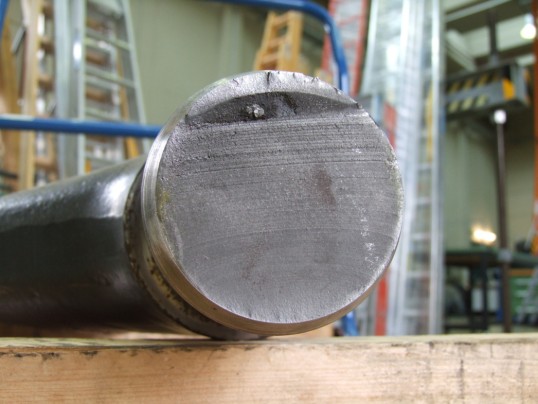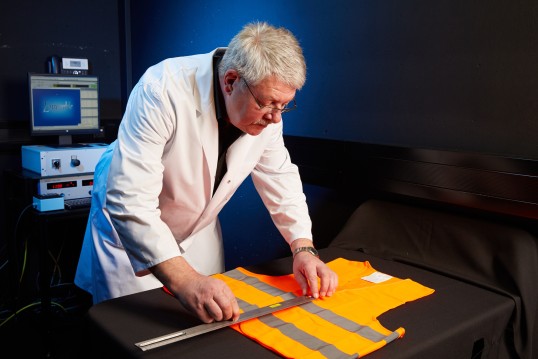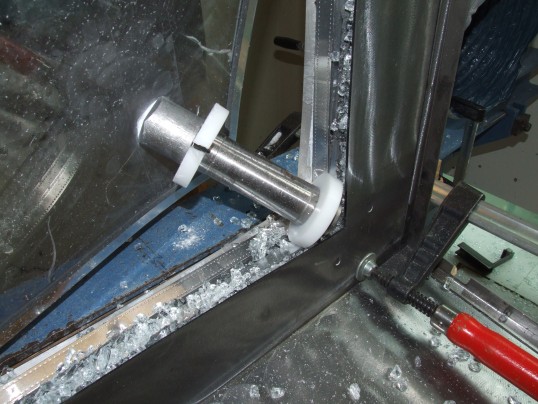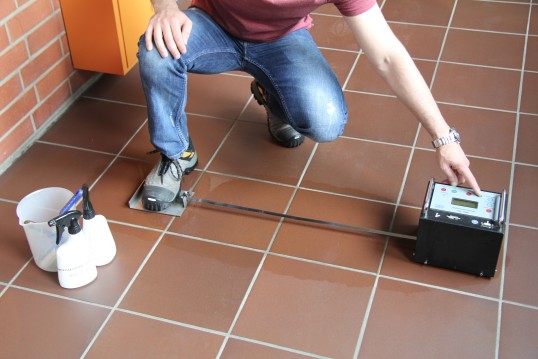- Missions of the IFA
- Fields of activity
- Organisation
- How to find us - Address - E-Mail
- Impressum
Working Equipment, Construction Products and Mechanical Protective Equipment
Personal protective equipment against physical hazards - Transportation and traffic systems, constructional elements/construction products - Materials and tools
The focal points in the field of PPE against physical hazards are:
- Testing/certifying and advising on PPEs against physical hazards (protective clothing, safety gloves, protective headwear, foot protection)
- Investigating accidents on PPE against physical hazards; basic research into technical safety issues regarding the use of PPE against physical hazards
- Devising test guidelines and cooperating in the relevant standard-setting bodies for PPE against physical hazards
The responsibilities in the field of transportation and traffic systems include:
- Testing and conducting basic research into the area of mechanical safety of transporting and lifting equipment
- Testing and studying fastening materials and other elements for securing loads on lorries
The focal points in the field of constructional elements/construction products are:
- Testing the anti-slip properties of floor coverings
- Testing ladders and steps; accident investigations and examination of technical issues relating to the use of ladders and steps
- Examination of the mechanical safety of constructional elements such as windows, doors and gates
- Testing temporary structures (scaffolding) and parts used temporarily for the erection and maintenance of building structures, particularly collective protective equipment
- Technical safety studies of construction products that indicate traffic routes and secure them
- Testing the safety against falls through construction components
- Performance of tests on construction products in the course of development
- Studying transport safety and practicality for use of large-area enclosure elements for walls, ceilings and roofs
- Analysis of damage and injury resulting from constructional element failure, especially as related to occupational accidents
- Development of test specifications and participation in the relevant standardization committees for temporary auxiliary construction materials

Damage inspection on a failed crane hook
Source: DGUV
The following responsibilities are included in the field materials and tools:
- Testing metallic and non-metallic materials; advice on questions of materials
- Testing the mechanical safety of rotating tools, especially grinding tools; developing test procedures for grinding tools and investigating accidents causing damage or injury during their use
- Conducting basic research on the design and the dimensioning as well as testing of guards
- Analysing failures and investigating accidents on machine elements, components and technical working equipment
- Studying the aging of components and technical working equipment made from plastics
Further reading on
Contact
Olaf Mewes
Fax: +49 30 13001-38001
Email
Accident Prevention: Digitalisation - Technologies
Tel: +49 30 13001-3540Fax: +49 30 13001-38001


